Agro 4.0 in practice: the field in the era of digital transformation
By Carlos Barbosa, CEO of ALIARE
With a robust mechanical construction and equipped with solutions designed to optimize transport and provide autonomy during operations, the USAP 3200 also stands out for the quality presented during seed distribution.
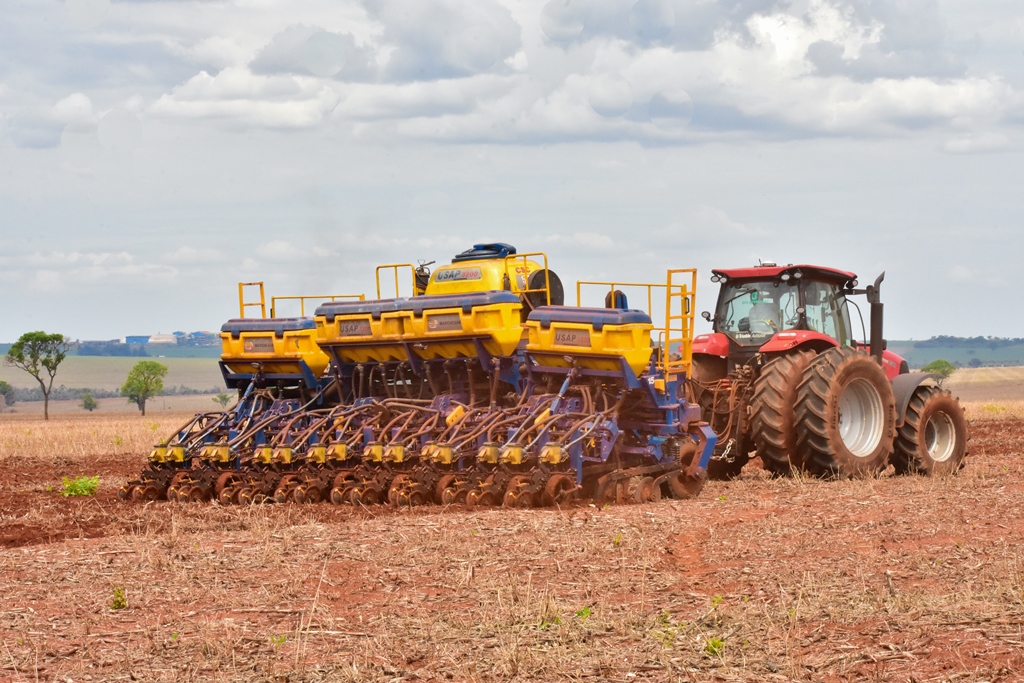
A test drive always provokes a certain curiosity, getting to know new people, proposals and mechanical systems. And it was no different in this edition. Despite Tatu Marchesan being a strong brand, a reference in planting and with 75 years on the market, Revista Cultivar Máquinas had not yet had the opportunity to carry out any field tests with the brand's machines. The test drive of this edition features the Tatu Marchesan articulated seeder, model USAP 3200, with 15 rows.
This seeder model is called by the manufacturer USAP - Folding planter, and can be purchased in versions with 15, 17, 19, 21, 23 and 25 rows. The basic foundation of this machine's design is the ability to articulate on a central base of seven lines, with 45cm and 50cm spacing between lines, with two lateral modules of three, four and five lines, respectively. In the project, a width of 3,20m was stipulated with the machine closed, for transport, which is the maximum width for traffic on rural and local paths and roads and for movement between areas and plots. On highways it is possible to transport with flatbed trucks with a transport width of 3,2m, without the need for escort or scouts. It is an important solution for those producers who need to move the machine from one field to another.
The USAP series was launched in 2007, at Agrishow de Ribeirão Preto, as USAP 6000. With the proposal of planting only seeds and not adding fertilizer, this model meets the profile of a farmer who fertilizes separately, mainly in the areas of Mato Grosso, Goiás, Tocantins, Bahia, Piauí and Maranhão. The meaning of USAP comes from USA (United States) and the P stands for Planter, as at the beginning of the project this model was sent, tested and sold in the United States of America.
Later, to meet the needs of most Brazilian producers, the USAP was launched in the Suprema versions, with vacuum seed dosers; the USAP CSC, with seed deposit in the center of the machine, and the USAP 6000 AS, with seed placement and superficial fertilizer application. More recently, to meet the needs of producers, the USAP 3200 was launched, with a fertilizer distribution mechanism and which features a very effective system for articulating line modules, which reduces, by closing, the total width of the machine to 3,20. XNUMXm.
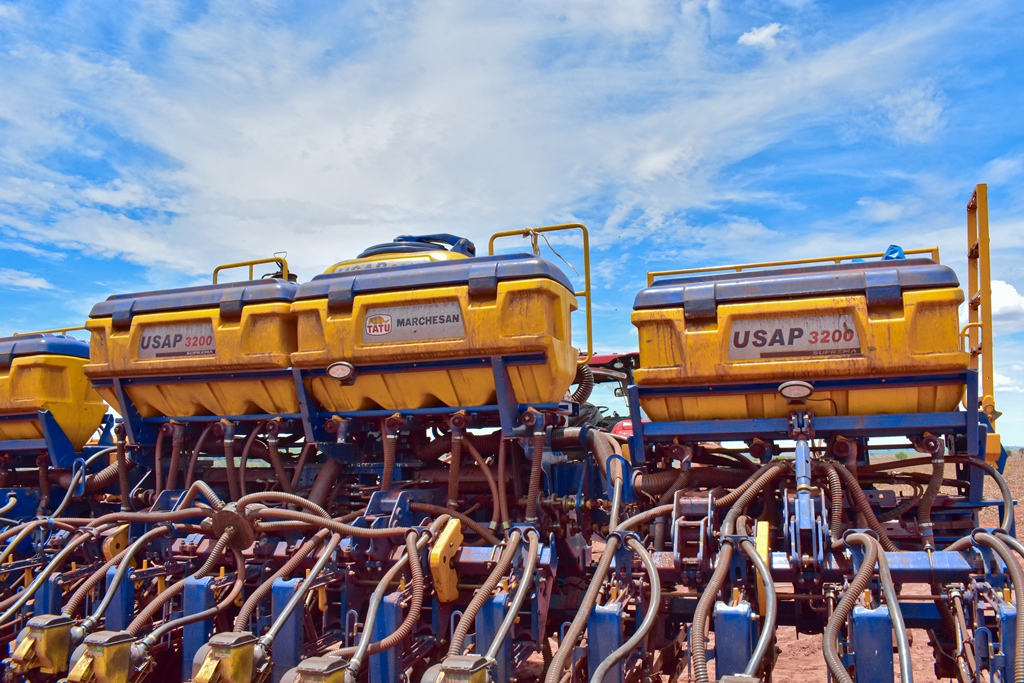
This project is very interesting in mechanical terms, especially in terms of design and ease of operation. As we mentioned, the machine design was initially designed with chassis 15 and 17 lines for a spacing of 45 or 50cm for an odd number of lines from a central chassis of seven lines and with side modules, leaving the width of the machine at 3,20 .45m. As the spacing used is 50cm, with the need for the producer to use an even number of lines, this possibility only exists for the XNUMXcm spacing. These configurations also facilitate the adaptation of these versions to the tractors available on the property, as the demand for traction power is directly related to the number of rows on the machine, also taking into account the standardization of spacing used in other seeders on the property.
In total, the Tatu brand offers 23 models of seeders for large grains with different versions, maintaining the main and best-known concept of the machine, which is robustness added with advanced technology.
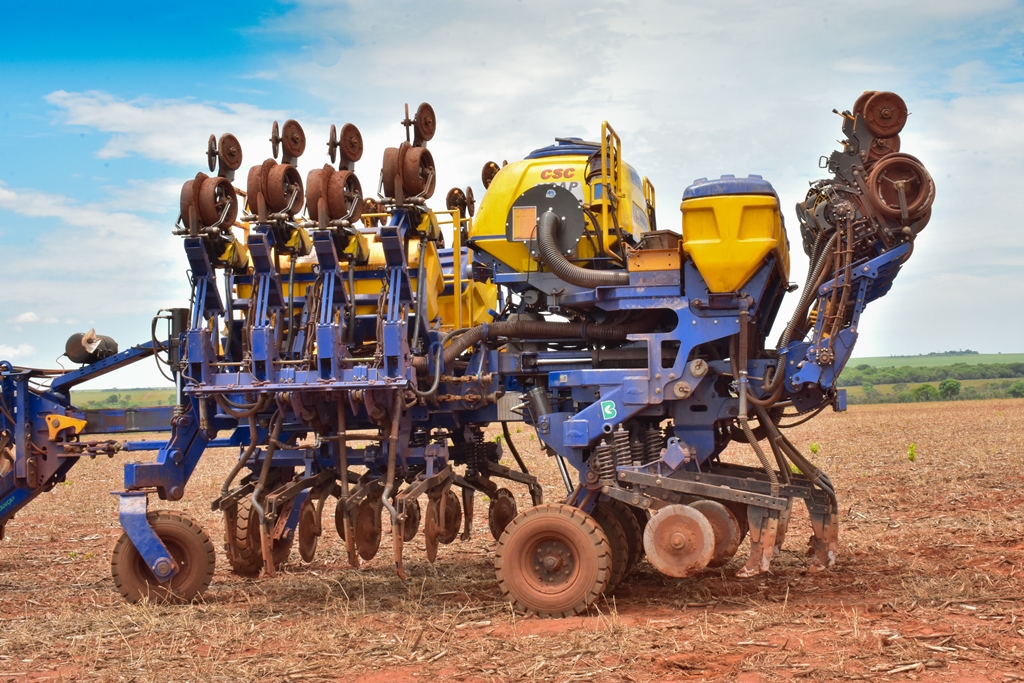
The Tatu Marchesan team, who accompanied us in the test, told us that the company adopts so-called consultative selling, in which the commercial departments of partner companies and salespeople are trained to offer a diversity of models and versions and analyze, together with the customer, which machine suits their conditions and needs, as the company has seeders for all property sizes, regions or technological demands in its projects. Through the relationship between your sales team and local resellers, the models used in each region are identified to meet all your needs.
The estimated power required by the seeder, reported by Tatu Marchesan, depends on the type of furrower, basically whether it uses a furrower rod or discs. But the movement of the entire hydraulic system and the turbines to generate the air flow requires approximately 15 hp to drive the seed tank with pressure and another 15 hp to drive the hydraulic turbine, in the pneumatic seed distribution version. The approximate power demand per seeding line, at normal working speed, is 14 hp for the configuration with scarifying rod.
During the test, our attention was drawn to the importance, in this machine, of the central structure of the chassis and the hitch to the tractor's drawbar. The hitch has two joints, for coupling, leveling and height adjustment. The telescopic jack, used on most machines, is not necessary because there is a stabilizing shoe for rest and the header with hydraulic height adjustment, both for the coupling process and for placing it in a parking position.
The activation of the entire system, both coupling and activating the hydraulic part of the machine, is done through the tractor's remote control valves (VCR). A hydraulic system completely independent of the tractor (SHT) will be optional for customers of this model. Currently, a certain independence of the system can already be considered, due to the presence of valves and control commands in the machine's coupling header. The operator can do all the coupling, after connecting the oil hoses to the valves, without needing to be inside the cab, using the tractor's controls.
The seed deposit is unique and central, used in machines with up to 21 rows, with a capacity of up to 1.250 liters, corresponding to a bag of seeds, but for larger machines you will have the option, from 21 rows onwards, of 2.500 liters or two bags of seed. For fertilizer tanks, the USAP 3200 has two autonomy standards: 130 liters/line for chassis 15/17/19 and 175 liters/line for chassis 21/23/25, providing greater work capacity.
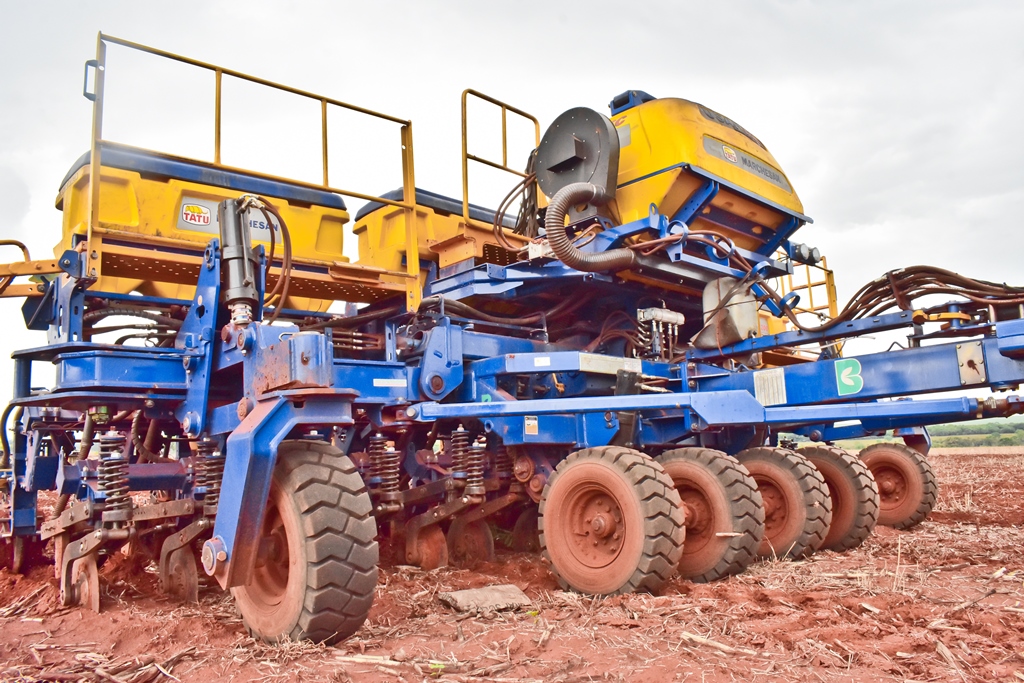
The centralization of the seed deposit, with the placement of all the material in just one point, simplifies the supply process in relation to other systems that have distribution in small portions across the entire width of the machine. Another important factor is the positioning further forward, towards the header, which makes it easier to approach the bag from the front, reducing the possibility of collision with the seed deposition elements and also improving weight distribution.
The central module of the USAP 3200 is supported and driven by transport wheels, which are fixed to the chassis using a rocker-type structure, with double wheels at the ends of each axle, one on each side. The side modules are supported by simple wheels, which are locked to the working position and unlocked, remaining oscillating when the machine is closed. With four wheels in the central module and one in each of the side modules, the wheelsets use tires measuring 300-15 NHS.
All logical connections, couplings, sockets and harnesses comply with the ISOBUS standard, allowing full connectivity with systems from other brands. Full operation depends on the configuration that each brand places on its system, but with the proper release of the monitor, the machine can be operated by different brands of tractors.
During the field test, we analyzed the functioning of all components in the direct sowing operation of soybeans, with fertilizer application in the row. The lines begin with a straw cutting disc, 20 inches (18 inches as optional) in diameter, supported by a single arm (mono-arm). Then, connected to the same structure, there is a furrowing rod, like a machete, which opens the furrow and where the fertilizer is placed.
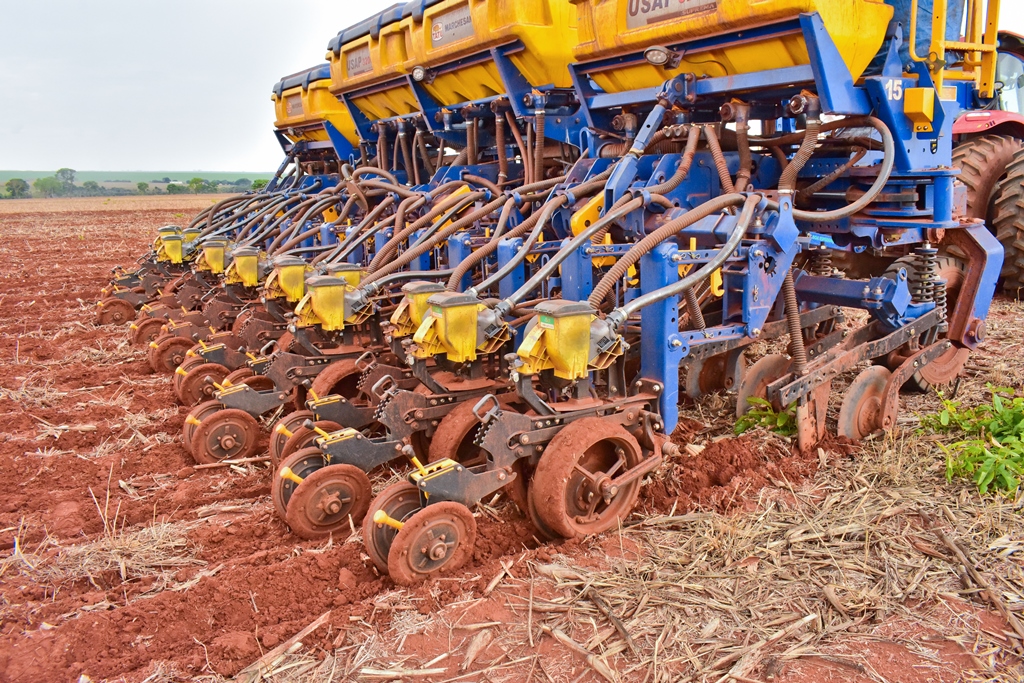
In the analysis we carried out, some characteristics of this mechanical system draw attention. The arms that support both the straw cutting disc and the furrowing rod are pressed by individual springs, so that the straw cutting and furrowing pressure can be adjusted separately, depending on the amount of straw and the texture of the soil. . Another detail is that the arms that support the furrowing rods have different lengths, so that the straw flows between them, preventing the material from plugging. This difference in length is 50cm and seems to be enough for the straw not to be retained. In our field test, the amount of straw was small and there was never any material clogging.
As expected, the lines pivot in relation to the structure, giving total independence between them, especially in the undulations of the terrain and passages over terraces. During the work we noticed the excellent articulation of the lines, mainly due to the way they are constructed and because they use self-lubricated gloves in the union.
It is also worth highlighting as a positive feature, the fact that the straw cutting discs are mounted on the hub with the ability to be quickly changed, as the disc fixing screws on the hub are on the external side of the monoarm, requiring little work for the disk change.
As for the furrowing rod, it can be said that it acts as a small scarifier. During the test we verified that the machine was assembled with the standard furrowing rod, however there are three other rod options, two with disarming, one automatic and the other with a pin, and a rod aimed at the slightest mobilization or disturbance of the soil. They told us that, for those customers who prefer to place the fertilizer on the surface, the machine can also be assembled with a simple 18-inch disc, replacing the furrowing rod. The machine we tested did not have this component.
The model we tested was a basic fertilizer dosing version, made by exchanging toothed and chain-driven wheels from the support wheels. Another possibility is the hydraulic drive of the doser.
The pneumatic seed dosing system that was on the USAP 3200 that we tested is the best option offered for this machine, supplied by the manufacturer Precision Planting, model V-Set II. Other options offered are the mechanical types, Radial Tatu and Radial Titanium.
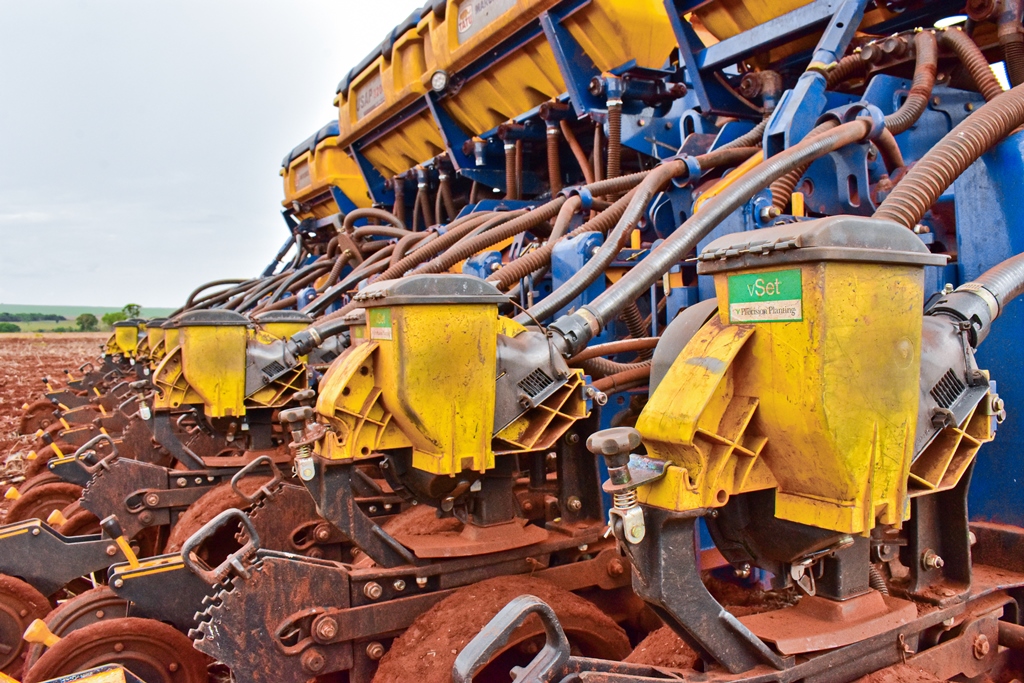
Very interesting and innovative is the doser drive system made using an encapsulated chain system, called TCE, which has permanent lubrication and is used for both seed distribution systems: pneumatic and radial, with permanent lubrication from the Mahm brand. In both cases, the flexible transmission is sealed and internally lubricated during assembly, not requiring periodic greasing.
The formation of the furrow and the deposition of the seed are done using 15-inch diameter discs, mounted in pairs and offset in their fixation on the hub, also assembled with the system that allows automatic quick change (TRA).
Seed depth control is done by limiting wheels in four options: standard, high/wide, angular and incorporated, and also by the V-shaped wheel. Also in the seed deposition system, the discs are mounted on a pantographic structure, with self-lubricated bushing with seal. The furrow is completed using a V-shaped wheel, which, in addition to helping to close the furrow, performs some “compaction” of the soil to maintain humidity, providing contact with the seed and helping to regulate the depth of seed deposition. . This set, called SPICRR, can be replaced by other options, depending on the site's soil conditions.
Although our test aimed to analyze the entire machine and its functionality in sowing and placing fertilizer in the soil, other aspects, mainly related to mechanical construction, were analyzed.
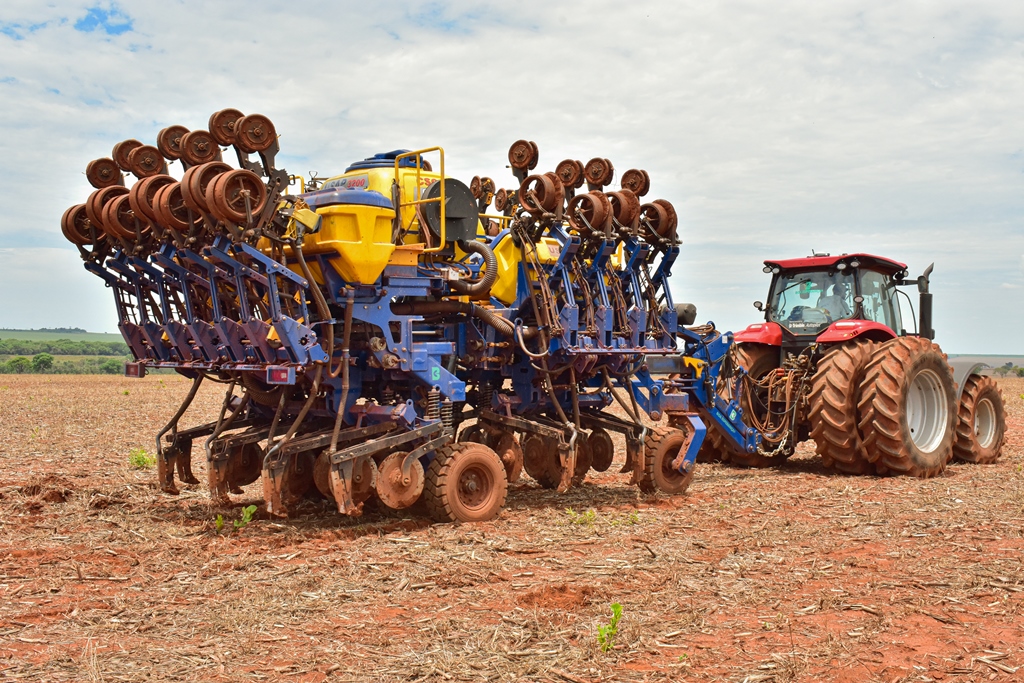
It is undeniable that a major difference is the possibility of articulating the side modules on the chassis, reducing the total width, to 3,20m, for transport. During the test we carried out opening and closing, verifying that entry into closed mode (transport) and exit to the working position are done entirely by the hydraulic system and that only the switching is changed. At no time is it necessary to use tools for assembly or disassembly. This means that after the machine arrives at the work site it is opened only by the operator, in seconds, and at the end of the work the transport position is also activated by a person. This difference causes the working width to be reduced from 7,44m to 3,20m, for example. In the case of the mechanized test set, with the Case-IH tractor, model Puma 230, the total width was less than the total width of the tractor, with double wheels. The total length of the machine is 7,70m. All machine locks in operating position were highlighted in yellow.
The coupling of the movement shaft of the fertilizer dosers in the process of articulating the machine is interesting. When the machine closes, the axles of the central fixed part automatically fit into the axles of the articulating part, requiring no action from the operator to connect them. Another factor to highlight is the positioning of the wheels at the side ends when in transport position, which occurs under the header and functions as a directional axis. This makes it possible to alleviate the efforts applied to the drawbar, due to better distribution of the machine's weight, in addition to promoting better absorption of impacts and vibrations, due to traffic on uneven roads, which could cause fatigue and even damage to the structure.
After recognizing the entire machine, receiving an explanation from Marchesan's technical staff, we had the opportunity to carry out a sowing test, coupling the machine to the Case-IH tractor, model Puma 230. The test was carried out on a 170-hectare plot. , in real sowing with soybeans, in a population of 220 thousand plants per hectare, of a cultivar with an indeterminate growth habit, with 50cm spacing between rows, which resulted in 11 seeds per linear meter and, therefore, a projected spacing of 9cm between plants.
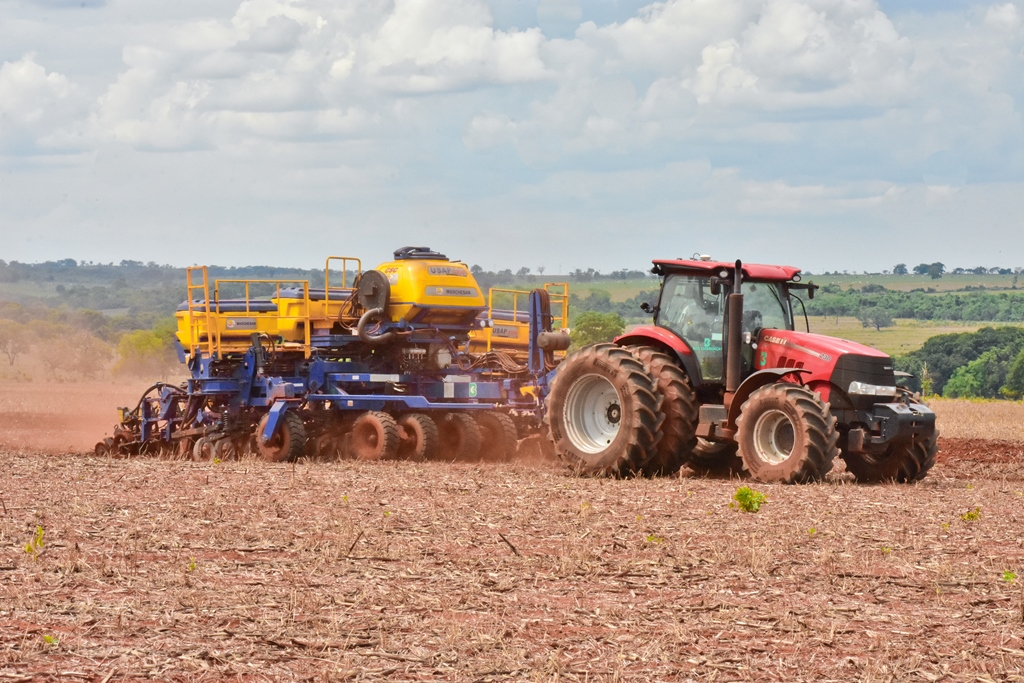
The Puma 230 tractor was placed in 8th gear and 2.200rpm in the engine, developing a working speed between 7km/h and 8km/h. Regarding the power demand, we noticed that the soil was very soft and had a lot of moisture, making it necessary to reduce the depth of the furrow, by adjusting the pressure springs, both on the straw cutting disc and on the furrowing rod, as they have adjustments. independent. Both the operator, Mr Leonardo da Silva Batista, and the inspector, Mr Isaias Neves do Nascimento, monitored the quality of the operation, stopping the tractor at all times and checking the conditions of the operation.
As a form of sampling, we opened a furrow and verified that, even in a preliminary assessment, the quality of seed distribution was quite good, with more than 90% of seed spacing within the expected standard.
During the machine recognition and field test stage we had the support of the Marchesan technical team, with the Tatu Marchesan Marketing coordinator, Mr. Luis Fernando Varella, Mr. Carlos Rogério Leite de Morais, Product Marketing coordinator, Specialty Planting, Harvesting and Transportation of Grains, who is very knowledgeable about the machine and its mechanical systems, Mr. Rodrigo Davassi, who is the Sales Supervisor in the São Paulo Region, field team salesman, and Mr. Leonardo Mingossi, salesman for the state of São Paulo.
As options, Tatu Marchesan offers equipment for line-by-line monitoring, both for fertilizer and seeds, hydraulic and electrical dosers, line-to-line shutdown mechanism, curve compensation and varied seed deposition rate. To use the manufacturers' systems, the customer simply needs to arrange for the monitor screen to be unlocked.
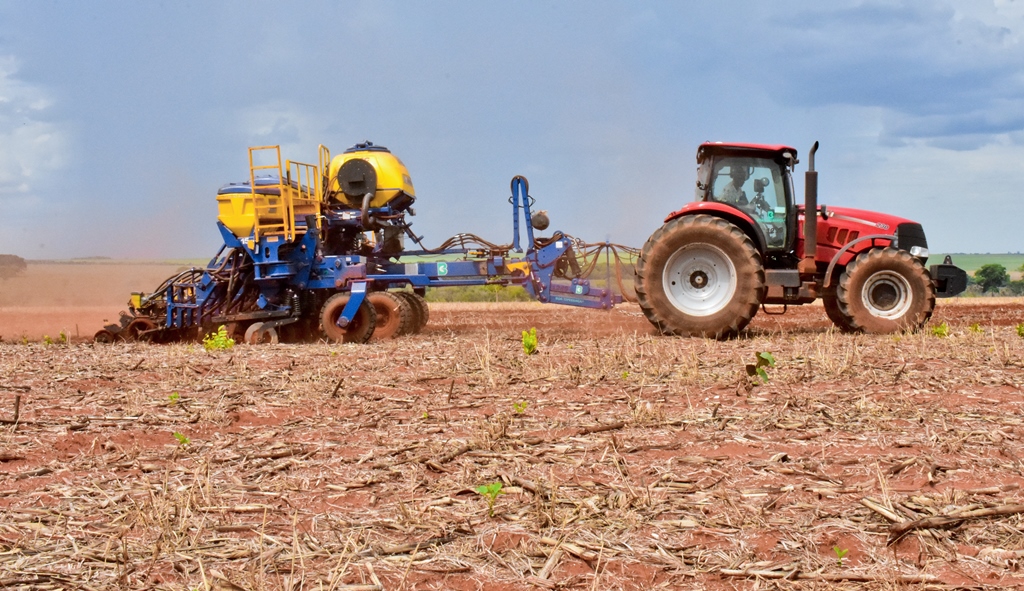
At the end of the test, we left with an excellent opinion about the mechanical construction and design solutions adopted by the manufacturer in this model. Notably, the articulation for retracting it into the transport position was very well evaluated, due to its autonomy, not requiring tools or mechanical work.
But also the assemblies of joining elements, such as self-lubricated gloves and encapsulated drive, sealed hubs, which do not require greasing, and the quick change system for cutting discs, were points that caught our attention.
Finally, the quality of seed distribution, highlighted in the evaluation we carried out in the sowing furrow, indicates that this model adds new features, without neglecting the functions required of a machine like this.
The company, with 75 years of history, is established in the city of Matão, in the interior of the state of São Paulo. It was derived from the small Oficina Brasil, changing its name to Irmãos Marchesan Ltda., now Marchesan Implementos e Máquinas Agrícolas Tatu S.A.
The tradition and concept of manufacturing durable, quality products now combine advanced technology. It mainly produces implements for soil preparation, such as scarifiers, plows, harrows, planers, cultivators with fertilization, rakes and also more complex machines, such as spreaders of different sizes, continuous flow and precision seeders, brush cutters, harvesting platforms of corn, bulk trailers and seed and fertilizer suppliers.
For the sake of clarification, it is worth highlighting that we use the terminology seeder to designate those machines designed to plant crops using seeds. It is very common for this machine to also be commercially known as a planter, by manufacturers in general. This terminological gap between academia, industry and the user is not relevant and can be overcome with understanding between these productive sectors. As a rule, the term planter is used for those machines designed to implant a certain crop through vegetative parts, such as sugar cane, for example, and the transplanter, would be the machine that places plants in a young vegetative state, such as forestry crops and vegetables, for example. Added to this dissonance is regionalism, which also influences the use of technical terms.
The test site was Fazenda Boa Esperança, located in the town of Gameleira, municipality of Campo Florido, Minas Gerais. The owner is a client of Tatu Marchesan, having three more machines, one of the Cop Trio model and two machines of the model we tested, the USAP 3200.
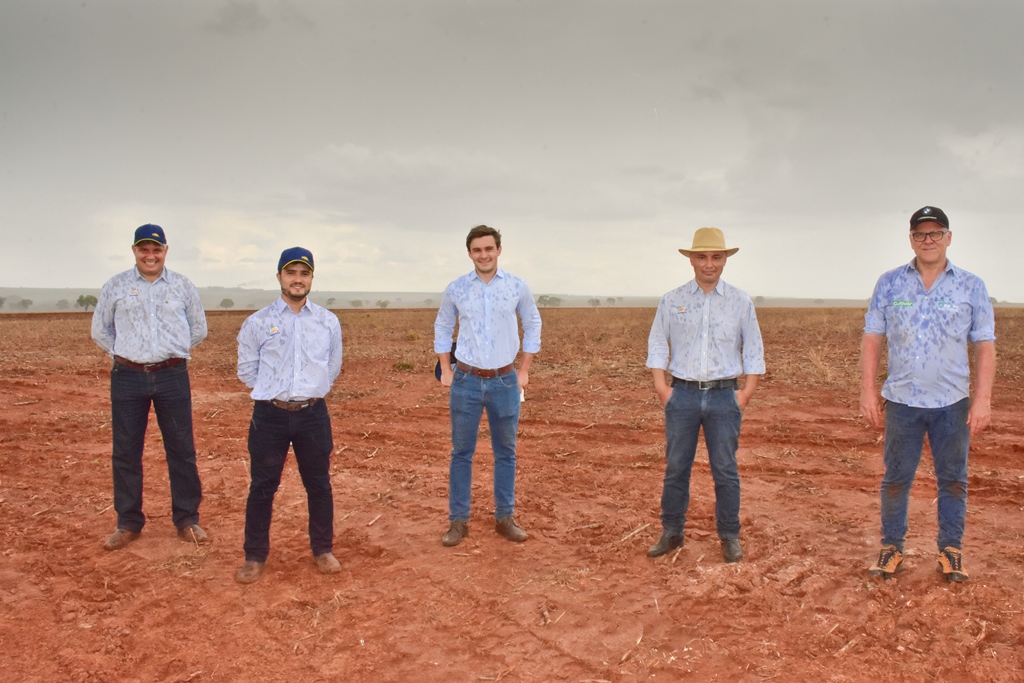
We spoke with the Farm's operators and field technicians and their opinion is very positive about the brand and the models they purchased. They are well accustomed to the Cop Trio, and are just starting to learn the details of operation, adjustment, calibration and maintenance of the USAP 3200. The most praised point was the machine's ability to move between one crop and another.
Jose Fernando Schlosser,
Marcelo Silveira de Farias and
Junior Garlet Osmari,
Agrotechnology Laboratory – Nema – UFSM

Receive the latest agriculture news by email